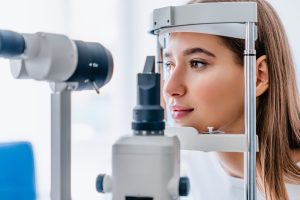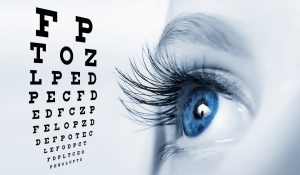What are the 3 types of colour deficiency?
Colour deficiency, often known as colour blindness, can manifest in different forms, with three main types being recognized. The first and most common type is Protanomaly or Protanopia, which is often referred to as red-green colour blindness. In this type, individuals have difficulty distinguishing between red, green, and yellow hues due to reduced sensitivity to red light. Protanomaly denotes a reduced sensitivity, while Protanopia is a more severe form where there is no sensitivity to red light at all. The second type, Deuteranomaly or Deuteranopia, is similar to the first but involves a reduced sensitivity to green light. Like Protanomaly, Deuteranomaly is a milder form, while Deuteranopia denotes a complete absence of green-sensitive retinal cones. Both Protanomaly and Deuteranomaly are often collectively referred to as red-green colour blindness. The third type is Tritanomaly or Tritanopia, which is less common and is known as blue-yellow colour blindness. Individuals with this type find it challenging to differentiate between blue and yellow colours. Tritanomaly involves a reduced sensitivity to blue light, while Tritanopia is the complete lack of blue-sensitive retinal cones. It’s also worth mentioning a very rare condition called achromatopsia, in which an individual cannot perceive any colours and sees only in shades of grey, but this is extremely uncommon. The severity and specific difficulties in colour perception can vary among individuals with colour deficiency.
Main cause of colour deficiency
The main cause of colour deficiency, often referred to as colour blindness, is genetic inheritance. It is usually an inherited condition that a person is born with. The genes are responsible for colour vision are located on the X chromosome. Since males have only one X chromosome (paired with one Y chromosome), they are more likely to have colour blindness if the X chromosome carries the defective gene. Females have two X chromosomes, so they would need to have the defective gene on both X chromosomes to have colour blindness; otherwise, they are carriers if they have it on only one.
Here is a brief overview of the main cause:
- Genetic Inheritance: The most common cause is a genetic mutation affecting the development of cones in the eyes. Cones are the photoreceptor cells responsible for detecting colour. People typically have three types of cones, each sensitive to a different range of light wavelengths – red, green, or blue. A mutation in the genes responsible for these cones can cause colour deficiency.
Although genetics is the main cause, there are other factors that can contribute to the development of colour deficiency:
- Diseases: Certain diseases such as diabetes, multiple sclerosis, or some diseases of the retina can affect colour vision.
- Medications: Some medications can affect the retina and colour vision.
- Aging: As people age, changes in the lens of the eye can cause colour vision to decline.
- Chemical Exposure: Exposure to certain chemicals can also affect colour vision.
- Eye Conditions: Conditions like glaucoma or cataracts may also affect how colours are perceived.
In these latter cases, the colour deficiency is acquired, not inherited, and may vary in its presentation compared to genetically inherited colour blindness.

Related FAQs
Wearing glasses or contacts can indeed affect dry eye symptoms, but the impact varies. Glasses can help shield the eyes from environmental factors that exacerbate dry eye, such as wind or air conditioning. On the other hand, contact lenses can sometimes worsen dry eye symptoms by absorbing tear moisture or by causing irritation. Certain types of contact lenses are designed to be more breathable and retain moisture better, which may be suitable for people with dry eyes. It’s crucial to discuss with an eye care professional to find the most appropriate type of contact lens or glasses. Proper care and hygiene when using contacts, along with regular breaks from screen use, can help minimize dry eye symptoms.
Dry eye syndrome can be both a temporary condition and a chronic disease, depending on its cause and severity. Environmental factors or certain life situations, such as screen use or air travel can cause temporary dry eye. Chronic dry eye, on the other hand, may result from systemic diseases, medication side effects, or age-related changes in tear production. Management and treatment can alleviate symptoms, but chronic dry eye often requires ongoing therapy. It’s important to consult with an eye care professional for an accurate diagnosis and treatment plan. Understanding the underlying cause is key to determining whether dry eye syndrome will be a temporary issue or a chronic condition.
Yes, some specific exercises and therapies can help relieve dry eye symptoms. Blinking exercises, for example, can help improve meibomian gland function and tear film stability. Warm compresses applied to the eyes can also stimulate tear production and release oils from the glands in the eyelids. Gentle eyelid massages can help spread the oils evenly across the eye surface, reducing dryness. Using a humidifier to add moisture to the air and taking regular breaks to rest the eyes during screen time can also be beneficial. Newer technologies such as IPL (Intense Pulsed Light) and RF (Radio Frequency) are also becoming available. Consulting with an eye care professional for personalized advice on exercises and therapies is recommended.
Sleep plays a crucial role in managing dry eye syndrome. Poor sleep can lead to insufficient eye lubrication and worsening dry eye symptoms. During sleep, the eyes rejuvenate and produce the moisture needed for the next day. Good sleep hygiene practices can help ensure the eyes are well-rested and hydrated. It’s also important to avoid sleeping with any airflow directly hitting the face, as this can dry out the eyes. Establishing a regular, restful sleep schedule can significantly improve dry eye symptoms.
Indeed, some medications can exacerbate dry eye symptoms. Diuretics, antihistamines, antidepressants, and some blood pressure medications are known to reduce tear production or alter tear composition. It’s important to review any current medications with a healthcare provider to determine if they could be contributing to dry eye symptoms. Sometimes, alternative medications with fewer dry eye side effects can be prescribed. Always consult with a healthcare professional before making changes to medication regimens. Patients should also stay hydrated and consider using artificial tears if taking medications known to cause dryness.
Yes, it is quite common for dry eye symptoms to worsen in certain weather conditions. Dry, windy, or smoky environments can lead to increased tear evaporation, exacerbating symptoms. Conversely, high humidity can sometimes alleviate dry eye symptoms because the air is more saturated with moisture. Cold weather, especially during winter when indoor heaters are used, can also dry out the eyes. It’s advisable to use humidifiers in such conditions to maintain indoor humidity levels. Wearing wraparound glasses or protective eyewear outdoors can help shield eyes from harsh conditions.
West Edmonton Vision Clinic
Visit our vision clinic in central West Edmonton for comprehensive eye exams, contact lens fittings, glasses, and more. LL Eyecare Centre is dedicated to providing the highest quality optometric services and products to our patients. Our team of experienced optometrists is here to help you with all of your eye care needs. Schedule an appointment today!
Clinic Hours
Monday Closed
Tuesday 9:00-5:00
Wednesday 9:00-5:00
Thursday 9:00-5:00
Friday 9:00-5:00
Saturday 9:00-2:00
Closed Sunday / Holidays




